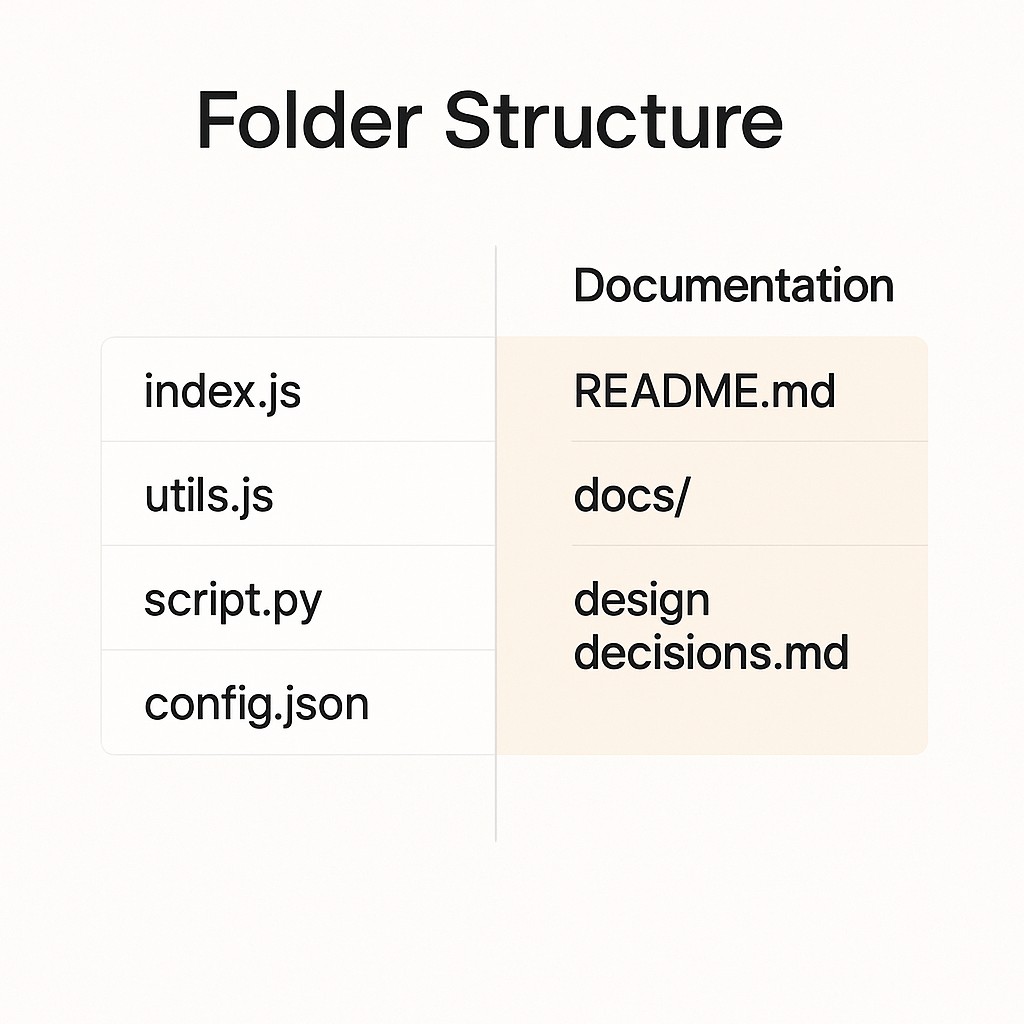Integrate Documentation into Developer Workflow: Treat Docs as Infrastructure
Integrate Documentation into Developer Workflow: Treat Docs as Infrastructure

Integrate Documentation Into Developer Workflow: Docs as Part of the Work, Not an Afterthought
A while back, I decided to add documentation review to our pull request checklist. Literally overnight, the quality of both our code and our docs jumped. I should have done it years earlier.
If you lead an engineering team (or have lived through enough launches), you know the real pain. Everyone avoids writing documentation. Without effort to integrate documentation into developer workflow, it gets skipped, ignored, or built after the fact. What’s left becomes outdated within weeks. When someone actually needs it—on a frantic morning before a release, or while onboarding—they find half-answers and broken links. It’s the reason tribal knowledge sticks around and everyone prefers to “just ask” instead.
I’ll admit it. I used to deprioritize docs fast, especially when the deadline pressure hit. There’s an urge to code, to ship, to build the thing—not to narrate the process. Writing documentation felt like pulling teeth, or worse, stealing time from the work that actually mattered. I avoided it every chance I got.
What finally changed? I figured out that documentation only works if it’s built right into your workflow, not stapled on as a chore after the code “looks done.” Waiting burns trust and guarantees your docs go stale. Instead, making the documentation review a standard part of development shifted our culture. The why and how get captured as decisions happen, not after. That’s what turned our docs from a graveyard into something we actually use.
Here’s the system we landed on, and how you can run it yourself. It’s almost embarrassingly simple. But it changed everything for us.
Principles for Building Doc Infrastructure That Works
If your ultimate goal is to enable your teams to move, learn, and build together, stop treating documentation as a dusty archive. What you actually need is a navigable, living map—a system that shows where everything is, why it’s built that way, and how it’s changed over time. The best documentation feels less like a library and more like a real-time dashboard of your engineering landscape. The difference is obvious. When anyone on the team can trace decisions, find up-to-date guides, and spot connections, you unlock speed and reduce friction.
First principle: keep documentation where the work happens. This isn’t just a slogan. It means building an integrated documentation workflow that uses the same tools we use for code, so updates ride the same commits and reviews. When documentation sits in the repo with your service, changes are natural. Nobody hunts for a rogue wiki page. Embedded documentation alongside the code simply became part of our normal commit workflows.
Second, adopt a modular documentation structure. Split it up by component, service, or API and let each own lightweight, local docs. When docs are self-contained and liberated from sprawling monoliths, maintenance stops feeling like a burden. It’s easy to update a README while touching code, or assemble docs for a new feature without refactoring the whole knowledge base. Small units mean fewer excuses for staleness.

Third and fourth: never lose sight of “why,” and always review docs like code. The real value in documentation comes from capturing context, alternatives, and rationale for decisions. Architecture Decision Records (ADRs) became our go-to because by capturing context, alternatives, and rationale for decisions, ADRs keep teams transparent, accountable, and plugged into knowledge-sharing. But it only works if you review docs the same way you review code. Commit messages shouldn’t be the last word, so have someone actually read and critique the doc changes. That discipline helps keep engineering docs current, trustworthy, and genuinely part of the work.
Treating documentation as infrastructure means it powers your velocity and scale, not just compliance. Once these principles take root, your docs become a real asset. Onboarding becomes faster, decisions don’t get lost, and your team trusts what they find. That’s the shift from being resentful about documentation to having it work for you—and it’s honestly worth every minute.
Back to that “living map” idea. I still catch myself reaching for the README before asking anyone for help. It doesn’t save me every time, but it’s now instinct.
The Playbook for Documentation That Does Not Suck
Here’s the practical playbook I wish someone handed me years ago. None of this is fancy. And if it feels like overhead, you’re probably making it too complicated. The goal is maximum impact, minimal ceremony. Follow these steps and you’ll see real change.
Step one: add documentation to your PR checklist, and make it non-negotiable. When someone updates code, they treat documentation as code and update it alongside the change. We started rejecting merges if the rationale, a reference, or a link to living docs was missing. No exceptions. At first, people grumbled—but within a week, old knowledge gaps started closing and it became easier to trust what you found in the repo. Setting a clear expectation early stops the flood of “I’ll write docs later” excuses.
Next, ditch the bloated central wiki and replace it with a lightweight index—a single page that connects you to living, local docs where the actual owners maintain them. We had an outdated knowledge base sprawling across tools, and nobody ever knew which page was right. By shifting to a simple index pointing to README files, architecture decisions, or owner-maintained docs, we made sure that updates happened in the same pull requests as the code. Owners saw what was stale and could update it naturally. The side effect: people started referencing docs in Slack and code reviews without hesitation, and onboarding stopped feeling like an archaeological dig. A living map always beats a dusty library.
Third, capture engineering rationale succinctly. Forget page-long essays explaining every possible alternative. Just record the key decisions, their constraints, and the main path not taken, either in a few lines in the README or a one-minute ADR. You don’t need to write a novel. Prioritize the why, not just the what. When someone asks “why did we do it this way?” six months later, they should find the answer right next to the code. Not buried in a forgotten Confluence space. This habit surfaces the tradeoffs and reasoning that actually matter to teammates and future maintainers.
Good documentation is less like a coffee-table atlas and more like a set of trail notes you actually carry. When you’re moving fast, nobody wants beautiful but useless binders. You need breadcrumbs to follow, quick lists, and anything you can jot down mid-hike. That mindset makes it easy to keep docs alive as the terrain changes.
Once—this is embarrassing to admit—I tried keeping our integration steps on a sticky note taped to my monitor for weeks. I thought I’d move it to the wiki “when I had time,” but I never did. The sticky note fell off, got vacuumed up, and the steps were gone. Had to reconstruct it from memory, and I know I got parts wrong. That mess taught me the value of keeping your docs where your work happens.
Take these steps and you flip the script. Documentation stops slowing you down and starts compounding your team’s speed and learning. The friction fades because updates happen right with the work, not as a chore you’re always postponing. This is how you build doc infrastructure that actually helps—no rescue mission, no heroics required.
Addressing Concerns: Making Docs Part of the Flow
Let’s talk about the time cost, because that’s usually the first wall people hit. Integrating docs into the pull request might feel like an extra step, another box to tick when you just want to ship. But every time we skipped documenting, we paid for it twice. Endless rework, blocked reviews, constant context switching just to answer simple questions later. When doc review went into our PR checklist, overnight we saw quality jump. Suddenly, reviewers stopped wading through stale instructions and the team could trust patches shipped with the right context. The upfront minutes you spend save hours of digging and double-checking down the line.
Worried about speed? Honestly, small, local updates alongside the code you’re already touching are way faster than those frantic “doc sprints” everyone dreads at the end of a quarter. Try adding doc updates in just one repo and see how quick it is—you’ll be shocked how much drag vanishes once it’s habitual.
People ask if the “why” can ever be brief. It can. Here’s what works for us: include a simple note in the PR description, like “Decision: Chose Redis over Memcached for latency, see proposal doc.” Link it directly to your design notes or architecture decision record. You don’t need a saga—just enough breadcrumbs so future readers know what shaped the change.
Adoption takes seeding norms, a few nudges, and measuring real impact over time. Start by automating a checklist (add a reminder to every PR) and share quick templates everyone can use. Track what matters: onboarding time, review throughput, and your incident rate as the months pass.
The actual gains show up in onboarding speed—when new folks ramp faster—and in higher review velocity, simply because “what changed” and “why” are always clear. Using a format friendly enough for all roles—like YAML—opens up contribution so the whole team can help, not just engineers, and you can see how GitHub Actions make this shift easy. Once people see the feedback loop tighten and the pain points drop, the habit sticks—and the payoff, both in speed and in fewer fire drills, becomes visible to everybody.
If you want to keep docs in the flow without the grind, use our AI to generate clean PR descriptions, concise ADRs, and readable READMEs, tailored to your goals, constraints, and tone.
If I’m being honest, I still get twitchy about pulling people away from the “real work” for documentation, especially with newer engineers who just want to build. That tension hasn’t disappeared. But the upfront pain is less than the pain of lost context, so I accept the tradeoff.
How to Get Started—Building Docs Into the Next 30 Days
Here's your 30-day starter plan, and it's intentionally simple. This week, integrate documentation into developer workflow by adding a documentation check to your pull request workflow—don't wait. Define doc owners for each piece of the system, so every repo, API, or module has one clear name tied to its docs. Tie the completion of documentation updates directly to “done”—features and fixes aren’t deliverable until their docs ship. I made documentation updates part of the definition of done. Features literally didn't count as shipped until their docs were up to date. As soon as this became non-negotiable, progress was obvious.
You want this to last, not just survive a sprint. So, make it easy: use short templates for updates, keep docs local to the code, paste in decision notes without overthinking it. Celebrate every time someone closes a gap, nails a clear README, or captures a decision in an ADR. The goal is simple—commit to making documentation suck just a little less, every week. Trust me, small wins add up.
On the tooling side, resist temptation to build out a massive company wiki (it will go stale in a month). Keep a single, simple index that links out to docs living in repos, code modules, and service folders. When documentation is discoverable right where you work, people actually use it and update it instead of wandering through a knowledge maze.
Try it on your next pull request. Good documentation isn’t extra. It is infrastructure. Treat it that way, and you’ll finally see the speed, trust, and scale you’ve been chasing actually show up.
Enjoyed this post? For more insights on engineering leadership, mindful productivity, and navigating the modern workday, follow me on LinkedIn to stay inspired and join the conversation.
You can also view and comment on the original post here .
